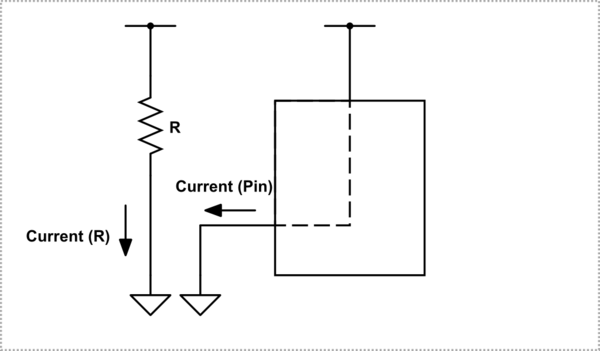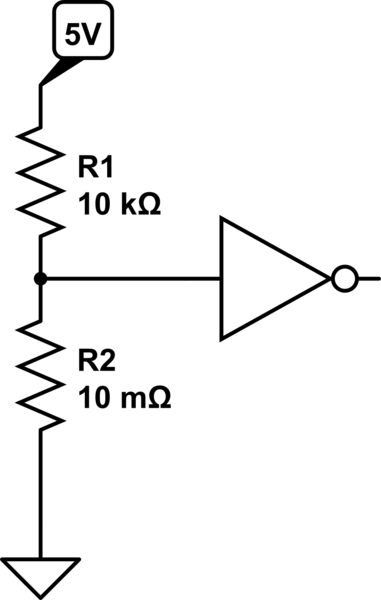For an intuitive understanding, it might be useful to pull out the old water pipe analogy. So let's replace the electricity in your circuit with water:
Your wires are now hoses that the water flows through. Vcc is a tap connected to your house plumbing. Ground is a drain.
The resistor is a coil of really narrow tubing that only lets the water slowly trickle through. The switch is a valve that you can open or close. The NOT gate, which basically acts as a voltage sensor, is now a water pressure gauge.
The important part to remember about the water analogy is this: Current is flow. Voltage is pressure.
Now, let's first see what happens when we open the tap and close the valve. Of course, the water from the tap will flow into the hose until it reaches the narrow tubing. The tubing will slow down the water flow, and cause pressure to build up in the hose feeding into it, but some water will still slowly trickle through. This trickle of water will next reach the drain valve (and the pressure gauge, which is connected to the same hose), but since the valve is closed, it cannot get any further.
So the pressure in the hose between the tubing and the valve will slowly build up, until it becomes equal to the pressure on the other side of the tubing (and to the pressure in the water mains feeding the tap). At that point, all the water will be at the same pressure, there will be no more flow, and the pressure gauge will register a high pressure equal to that inside your house plumbing.
Next, let's open the drain valve. Now all the water in the hose between the tubing and the valve can flow out, and the pressure will drop.
The water in the hose between the tap and the tubing will still be at high pressure, though, and so will start to flow out through the tubing. But since the tubing is narrow, the water can't flow through it very fast, and only a trickle of water will come out.
And that trickling water will immediately flow out through the open valve and down the drain, as fast as it comes out of the tubing. Thus, despite the trickle of water coming out of the tubing, the pressure gauge will read approximately zero.





